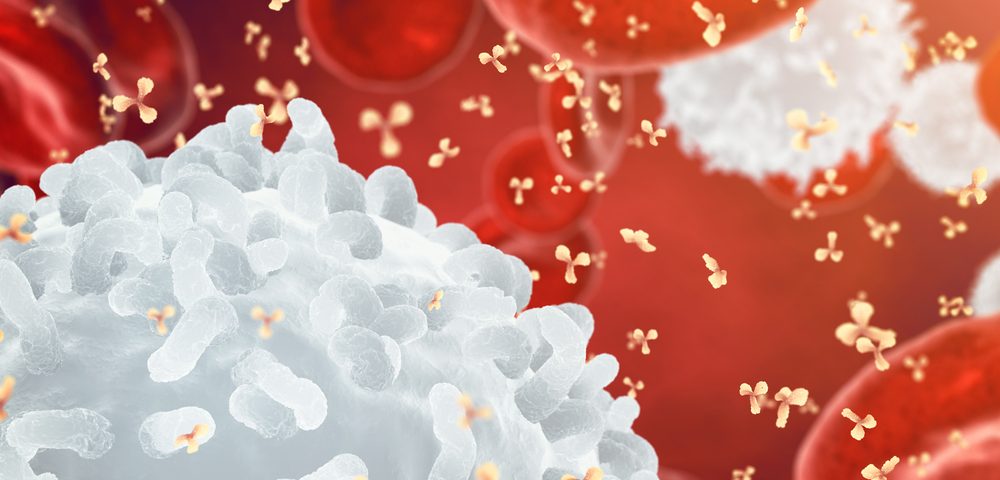Checking for blood levels of a small protein called CXCL9 can be a valuable biomarker for detecting macrophage activation syndrome (MAS), a potentially life-threatening complication in patients with systemic juvenile idiopathic arthritis (sJIA).
The study with that finding, “Clinical significance of serum CXCL9 levels as a biomarker for systemic juvenile idiopathic arthritis associated macrophage activation syndrome,” was published in the journal Cytokine.
Unlike other forms of juvenile arthritis, which are considered autoimmune conditions, more recent research suggests that sJIA is actually an autoinflammatory disorder.
This means that components of the body’s first-line of defense (the innate immune system) begin to overreact in the absence of any infection or insult.
The inflammatory state of children with sJIA is evidenced by their abnormally high blood levels of powerful proinflammatory cytokines, including interleukin (IL)-6, IL-1β, and IL-18. A cytokine is a small protein secreted by certain cells of the immune system and can effect other cells.
Moreover, children with sJIAA are at a particularly higher risk of developing a rare, life-threatening complication called macrophage activation syndrome (MAS).
For reasons that are still unclear, an estimated 80% of MAS cases that occur in patients with rheumatic diseases are associated with sJIA. The prevalence of this complication in children with sJIA is put at about 10%.
MAS is an overwhelming inflammation caused by an uncontrolled and abnormal activation of the immune system, involving a massive production of proinflammatory cytokines.
Known triggers of MAS include infections, a disease flare or certain medicines used to treat sJIA.
“MAS is a potentially life-threatening disease. Therefore, prompt diagnosis is essential to initiate life-saving treatment,” researchers wrote.
However, early detection of this complication in children with sJIA is often challenging. There are no specific clinical or laboratory markers and it may be difficult to distinguish from other conditions with overlapping manifestations, such as flares of sJIA or systemic infections. In addition, MAS can show up in a diversity of clinical symptoms.
That is why recognizing signs of MAS and getting a timely and accurate diagnosis is critical.
Understanding which cytokines are key for MAS associated with sJIA may shed light on the mechanisms that lead to this complication and help researchers find novel diagnostic markers.
With this in mind, a team of researchers at Kanazawa University in Japan, sought to identify the cytokines involved in the development of sJIA associated MAS to see if any could be used as predictive biomarkers for this complication.
They also wanted to understand if therapy with Actmera (tocilizumab), a humanized anti-IL-6 receptor antibody that inhibits IL-6 activity and is approved for sJIA, could inhibit the release of other inflammatory cytokines beyond IL-6.
Using an antibody array spanning 174 different cytokines, researchers screened serum samples of 15 patients with sJIA, five of whom were receiving Actmera.
Five cytokines — CXCL9, sTNF-RI, sTNF-RII, Axl, and MIP-1delta — were significantly elevated when patients were going through MAS, compared to when they were in the active phase of sJIA only.
Of these, CXCL9 was the cytokine that more sharply increased as MAS developed. Serum levels of CXCL9 were measured in 56 sJIA patients (including 20 MAS patients) and eight healthy controls, and compared with clinical features, including laboratory indicators of disease activity in sJIA and MAS, and severity of symptoms.
Serum CXCL9 levels positively correlated with a number of other inflammatory and disease severity markers — IL-18, IL-6, sTNFR-II, neopterin, ferritin, platelets, aspartate aminotransferase (AST), fibrinogen, triglyceride, and white blood cell counts.
“These results indicate that serum CXCL9 levels may be a useful biomarker for the diagnosis of MAS,” the researchers wrote.
As prior studies have correlated IL-18 increase with MAS, “monitoring of serum IL-18 levels in conjunction with serum CXCL9 levels might be useful for the prediction and the diagnosis” of this complication in sJIA.
In addition, the expression of 15 cytokines was altered (10 were lowered, including CXCL-9; five were elevated) during MAS, in patients receiving Actmera, compared with those not receiving the treatment.
These changes may be related to the milder clinical symptoms associated with MAS that have been observed in patients taking Actmera, researchers suggest, although more firm conclusions are not possible due to the small number of patients studied.

